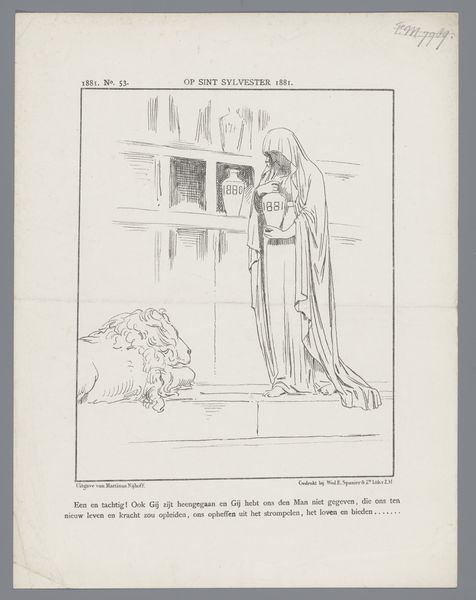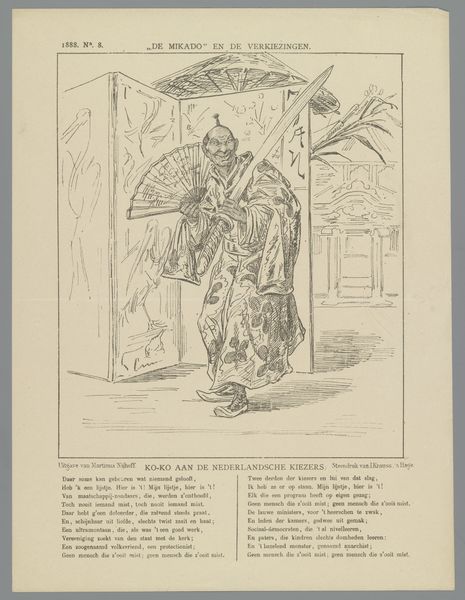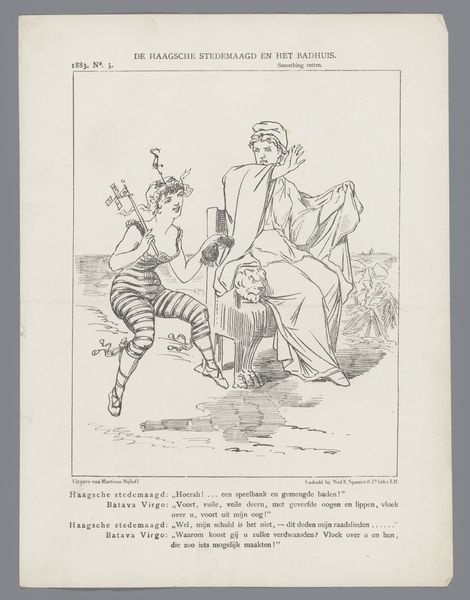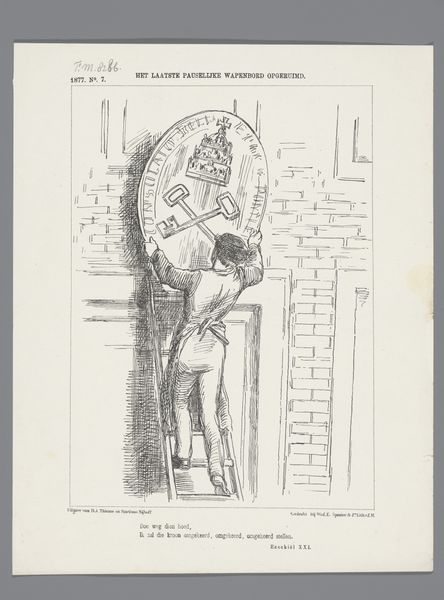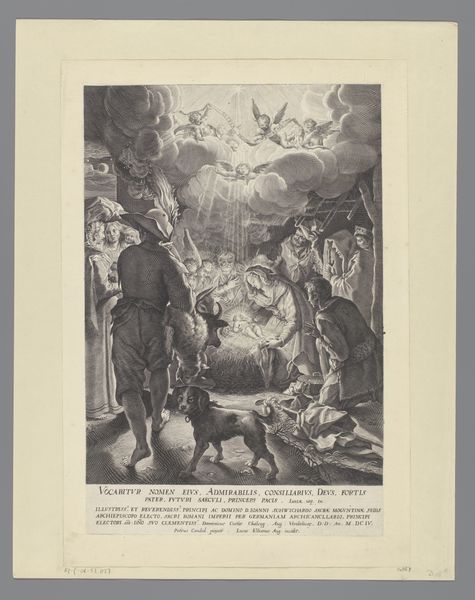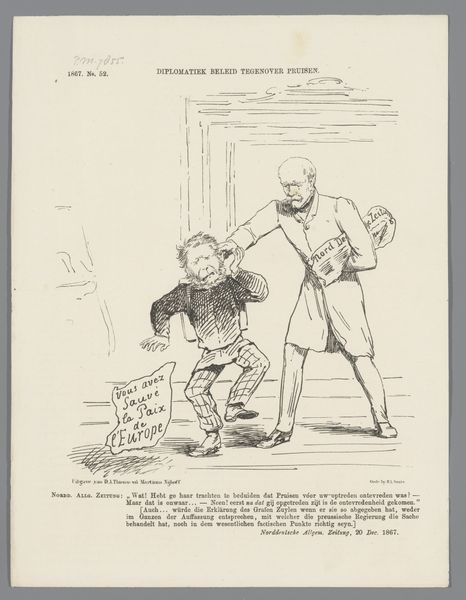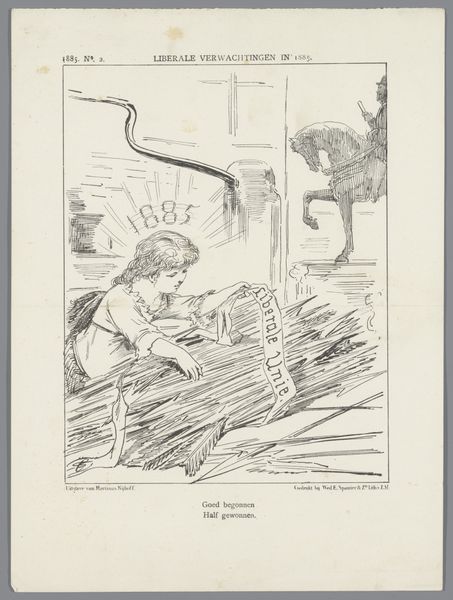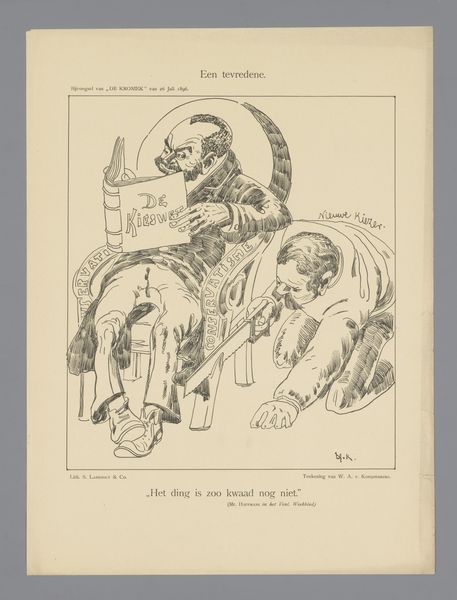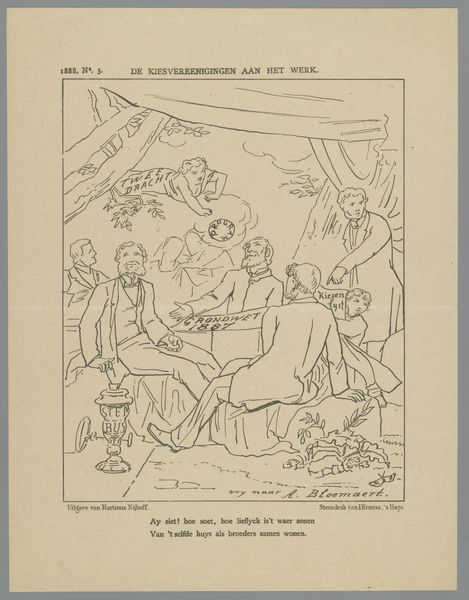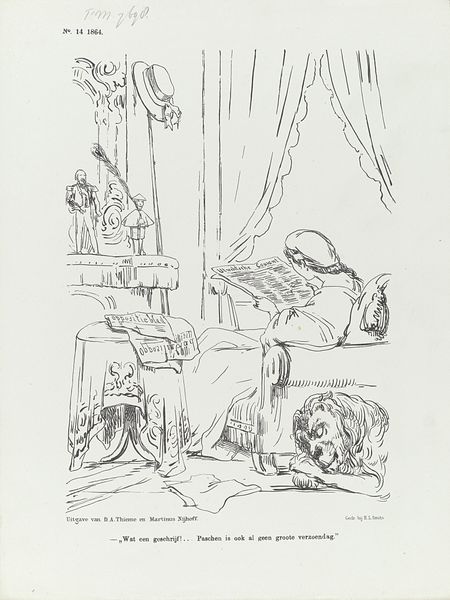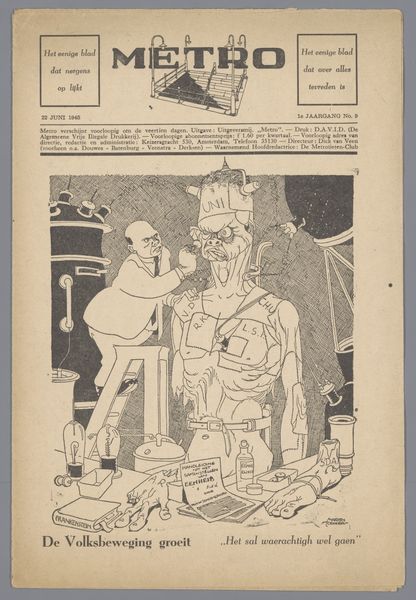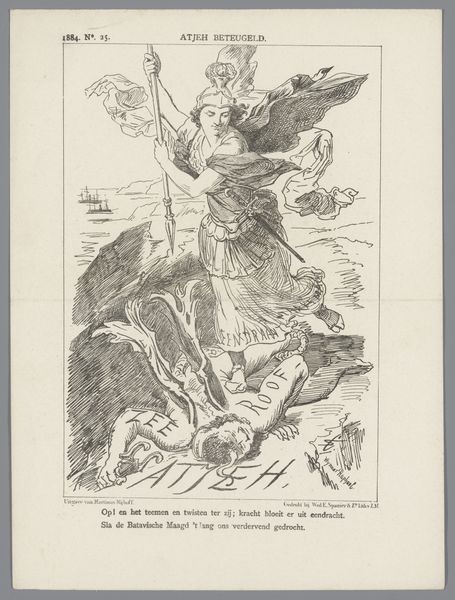
drawing, graphic-art, print, etching, ink, pen
#
drawing
#
graphic-art
#
comic strip sketch
# print
#
etching
#
caricature
#
sketch book
#
cartoon sketch
#
personal sketchbook
#
ink
#
sketchwork
#
ink drawing experimentation
#
pen-ink sketch
#
symbolism
#
sketchbook drawing
#
pen
#
storyboard and sketchbook work
#
sketchbook art
Dimensions: height 275 mm, width 215 mm
Copyright: Rijks Museum: Open Domain
Curator: Looking at this print, its sharp lines immediately create a mood of impending change and perhaps even anxiety. The density of detail gives the impression of a mind grappling with many complex issues. Editor: This is “Spotprent bij het einde van het jaar 1885,” created in 1885 by Johan Michaël Schmidt Crans, executed using pen, ink, etching, and other graphic techniques. To understand it, we must consider its socio-political context within Dutch society at the close of 1885. Curator: You can feel a distinct symbolic charge! The figure on the left with wings and an hourglass almost seems like Father Time sweeping away what lies inside the doorway—what feels like all the burdens and ills of the passing year. Editor: Indeed, the caricature uses symbolism effectively to express a specific commentary. The doorway marked “1885” opens to reveal fragments inscribed with societal concerns. Reading those anxieties gives insight into Dutch cultural tensions during this era. We see critiques about malaise, sugar disease, characterless ministers and decorative art styles. Curator: It also feels deeply relevant now; the debates haven’t entirely changed. This piece invites us to reflect on our own anxieties regarding society, culture, and politics in a way that isn't prescriptive, but thoughtful. Editor: Precisely. And seeing it as a graphic artwork makes you question what was happening within Dutch media in relation to political tensions, popular press etc., especially since many societal burdens are alluded to within it, offering a public role in art. Curator: Considering these intricate etchings, it makes me think of the power and the need to represent voices from various groups within society which can easily get repressed and misrepresented within art—what a crucial part such prints must've had to play back then! Editor: I find myself contemplating the lasting value of politically engaged art—its ability to spark critical dialogues through the years. Curator: I'm intrigued by how such forms could facilitate resistance against injustices but at the same time reflect our own anxieties that remain the same today.
Comments
No comments
Be the first to comment and join the conversation on the ultimate creative platform.

